As a recruiter, you might be tasked with hiring a typist to boost your company's productivity. However, many hiring managers overlook the importance of thoroughly vetting candidates for this role. A skilled typist can significantly improve data entry accuracy, document processing speed, and overall office efficiency. It's not just about finding someone who can type quickly; it's about identifying a candidate with attention to detail, consistency, and the ability to handle various document formats.
This article provides a comprehensive guide on how to hire the right typist for your team. We'll cover everything from understanding the role to conducting effective interviews and using typing tests to evaluate candidates' skills.
Table of contents
What Does a Typist Do?
A typist is responsible for converting written or audio material into digital text. This role is central to maintaining accurate digital records and supporting communication within an organization.
Day-to-day tasks of a typist include:
- Transcribing documents, reports, or meeting notes into digital text files.
- Proofreading text for errors and inconsistencies to ensure high-quality output.
- Formatting documents according to company standards and guidelines.
- Managing files to ensure all digital documents are organized and stored correctly.
For more detailed insights into the skills a typist should possess, you might find this skills required for typist guide useful.
Typist Hiring Process
The typist hiring process typically takes 4-6 weeks from start to finish. Here's a quick overview of the key steps involved:
- Write and post a clear typist job description
- Review resumes and applications (1 week)
- Conduct typing tests and skills assessments (1 week)
- Interview shortlisted candidates (1-2 weeks)
- Check references and make job offer (1 week)
This timeline can vary based on your organization's needs and the candidate pool. In the following sections, we'll dive deeper into each step of the process, providing tips and best practices to help you find the ideal typist for your team.
Skills and qualifications to look for in a Typist
When hiring a Typist, it's important to distinguish between must-have skills and nice-to-have qualifications. The key is to focus on core competencies that directly impact job performance. Here's a quick guide to help you build an ideal candidate profile for your Typist role.
Required skills typically include a minimum typing speed, excellent language skills, and proficiency with word processing software. Preferred qualifications might encompass specialized experience or additional technical aptitudes. Remember, typing speed is just one aspect of a well-rounded Typist.
| Required skills and qualifications | Preferred skills and qualifications |
|---|---|
| Minimum typing speed of 60 words per minute | Experience with transcription or data entry |
| Excellent grammar, spelling, and punctuation skills | Familiarity with specialized terminology (e.g., medical, legal) |
| Proficiency in word processing software (e.g., Microsoft Word) | Knowledge of document formatting and styles |
| Strong attention to detail and accuracy | Bilingual or multilingual typing skills |
| Ability to meet deadlines and work under pressure | Experience with dictation software |
How to Write an Effective Typist Job Description
Once you've defined the candidate profile, capturing this in a job description is the next step to attract the right typists. An accurate job description sets a clear foundation for recruiting talent.
- Highlight Key Responsibilities: Specify the core tasks such as typing documents, transcribing audio recordings, or maintaining data accuracy. This helps candidates understand the role's everyday demands and ensures they are ready for these tasks.
- Balance Skill Requirements: While typing speed and accuracy are vital, don't overlook the importance of attention to detail and time management. It's not just about speed; quality and reliability are equally important.
- Showcase Company and Role's Unique Traits: Mention what sets your company apart, whether it's a collaborative work culture or opportunities for career growth. Engaging details can attract candidates who resonate with your company values.
For further guidance on crafting your typist job description, explore our typist job description guide.
10 Platforms to Hire Typists
Now that you have a detailed job description, the next step is to post it on job listing sites to source potential candidates. These platforms provide a vast pool of qualified typists, helping you reach skilled individuals who can meet your specific requirements.
Upwork
Ideal for hiring freelance typists for short-term or project-based work due to the platform's extensive pool of freelance professionals.
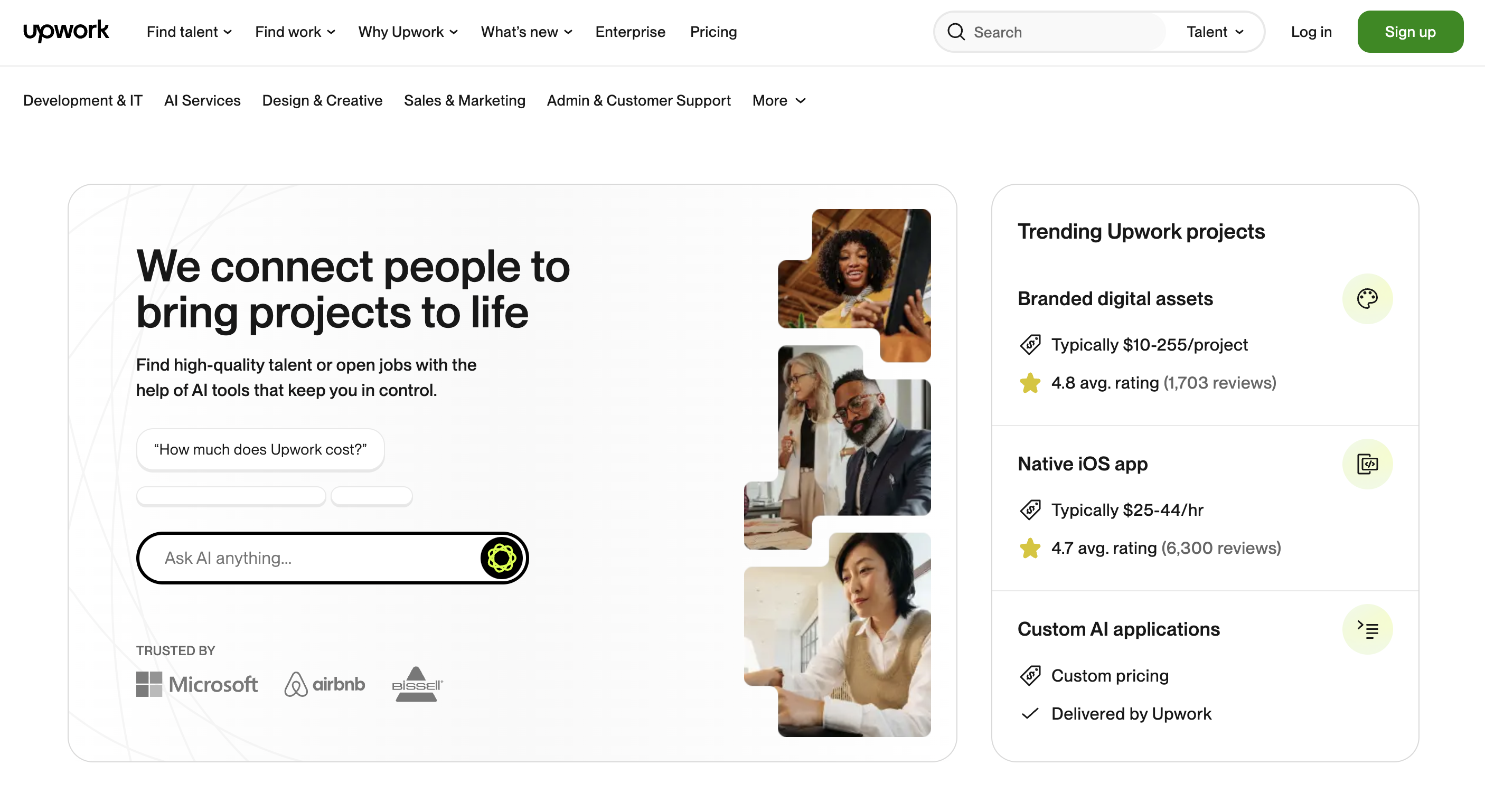
Freelancer
Useful for finding freelance typists as it offers a wide variety of freelancers and allows for competitive bidding on typing projects.

Indeed
Best for full-time and part-time positions due to its extensive reach and easy-to-use job posting features.
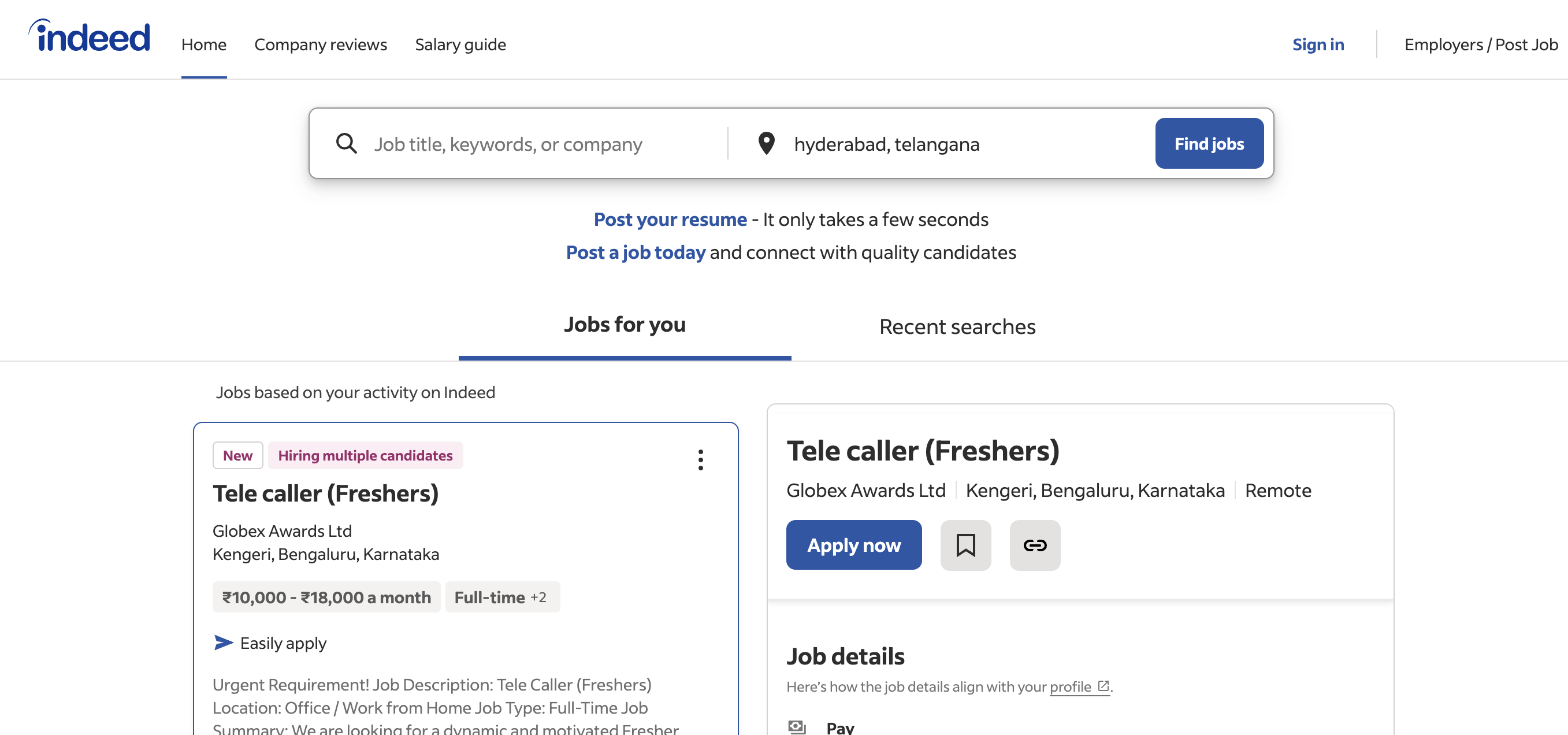
For your remaining typist hiring needs, platforms like LinkedIn offer professional networking opportunities for full-time and part-time roles, while FlexJobs and Remote.co are perfect for those seeking remote or flexible work arrangements. PeoplePerHour and Snagajob cater to freelance and hourly typist positions, ensuring you have options for all kinds of hiring needs. To assess typing skills thoroughly, consider using specialized typing tests to enhance your hiring process.
Keywords to Look for in Typist Resumes
Resume screening is a key step in finding the right typist for your team. It helps you quickly identify candidates with the necessary skills and experience before moving to interviews.
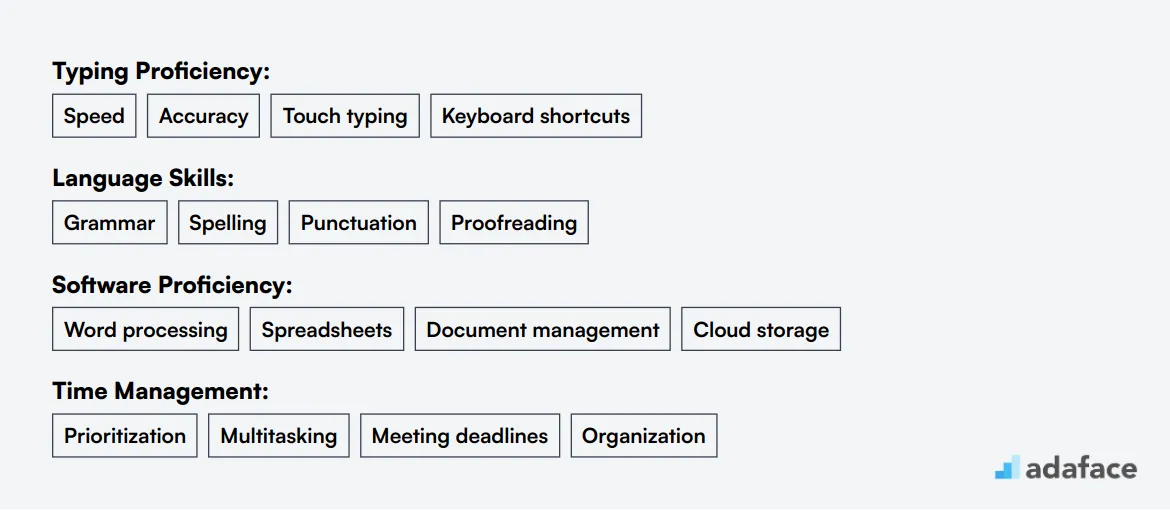
When manually screening resumes, focus on key typist skills like typing speed, accuracy, and software proficiency. Look for mentions of words per minute (WPM), error rates, and familiarity with word processing tools.
To streamline the process, consider using AI-powered resume screening tools. These can quickly scan multiple resumes for relevant keywords and skills, saving you time and ensuring consistency in your initial evaluation.
Here's a sample prompt for AI-based resume screening:
TASK: Screen resumes for typist role
INPUT: Resumes
OUTPUT:
- Email
- Name
- Matching keywords
- Score (out of 10)
- Recommendation
- Shortlist (Yes/No/Maybe)
KEYWORDS:
- Typing speed (60+ WPM)
- Accuracy
- Microsoft Word
- Attention to detail
- Grammar and spelling
- Transcription experience
- [Data entry](https://www.adaface.com/assessment-test/data-entry-test)
- Proofreading
Recommended Skills Tests to Screen Typists
Evaluating a typist's skills through tests is a recommended approach for hiring managers. It ensures you identify candidates who are not only quick on the keyboard but also accurate and detail-oriented. Here are our top test recommendations:
Typing Speed Tests: Use typing speed tests to measure your candidates' typing speed and accuracy. These tests help gauge how fast a typist can work under pressure without compromising precision.
Attention to Detail Test: An attention to detail test is essential for ensuring typists can spot errors and inconsistencies in text, which is crucial for maintaining high-quality output.
Error Checking Test: The error checking test evaluates a candidate's ability to identify and correct mistakes in written material, a skill crucial for producing polished documents.
Basic Computer Skills Test: A basic computer skills test ensures that typists are familiar with fundamental computer operations, which supports their efficiency in completing typing tasks.
English Proficiency Test: The English proficient C2 test assesses a typist's command over the language, ensuring clarity and correctness in the documents they produce.
How to Structure the Interview Stage for Hiring Typists
Once candidates successfully pass the initial skills tests, the next step is conducting technical interviews to assess their specific abilities relevant to typing roles. While skills tests are useful for filtering out unsuitable applicants, interviews delve deeper into finding the most suitable candidates for the role. This stage is crucial in evaluating a candidate's practical skills and how well they fit with your team's dynamics.
When interviewing typists, consider asking questions that uncover both their technical agility and adaptability. Here are some recommended questions: How do you handle tight deadlines while ensuring accuracy? This tests time management skills. Can you describe a time when you identified an error in a document before it was finalized? This question evaluates attention to detail. What typing software are you familiar with, and how do you stay updated with new tools? This assesses their adaptability to technology. Can you highlight some strategies you use to improve or maintain your typing speed? This looks into their self-improvement methods. And finally, how do you prioritize tasks when managing multiple typing assignments? This sheds light on their organizational skills. For a more comprehensive list of questions, you can explore our guide on typist interview questions.
How much does it cost to hire a Typist?
Hiring a typist in the United States generally costs around $38,175 per year, but salaries can vary based on location. For example, typists in San Francisco might earn between $43,342 and $61,092, while those in Harrisburg could see figures from $28,878 to $37,466. This range accounts for factors like regional demand and cost of living.
Typist Salary in the United States
The average salary for a typist in the United States is approximately $38,175. Salaries can vary widely based on location, with figures ranging from around $26,154 at the lower end to about $51,882 at the higher end. For instance, typists in San Francisco can earn between $43,342 and $61,092, while those in Harrisburg may see salaries from $28,878 to $37,466.
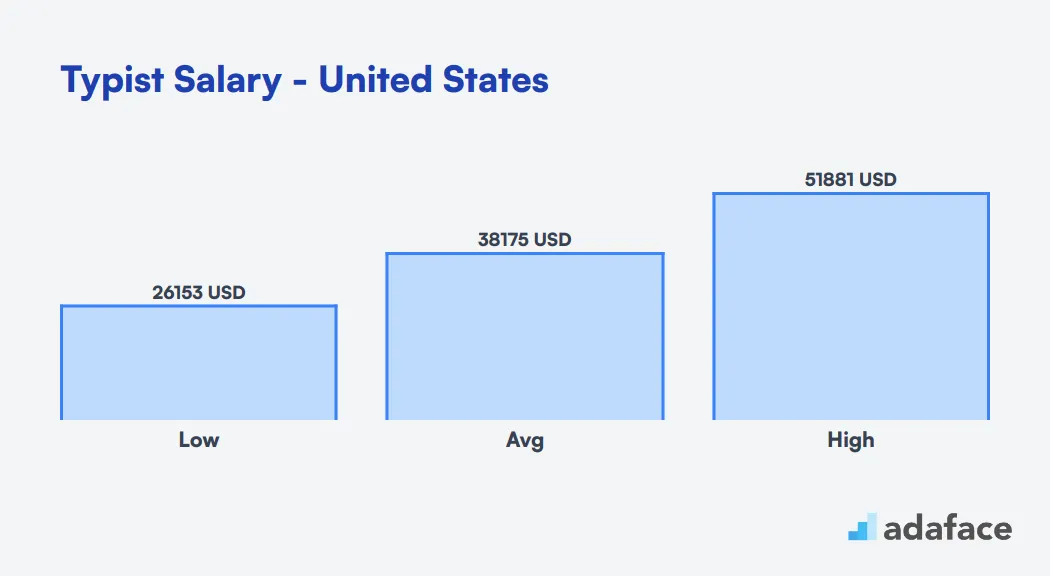
Typist Salary in the United Kingdom
The average salary for typists in the United Kingdom varies based on experience, location, and industry. Entry-level typists can expect to earn around £18,000 to £22,000 per year. More experienced professionals or those in specialized fields may earn up to £30,000 annually.
Factors influencing typist salaries include typing speed, accuracy, and additional skills such as audio transcription or data entry. London-based typists often command higher salaries due to the higher cost of living in the capital city.
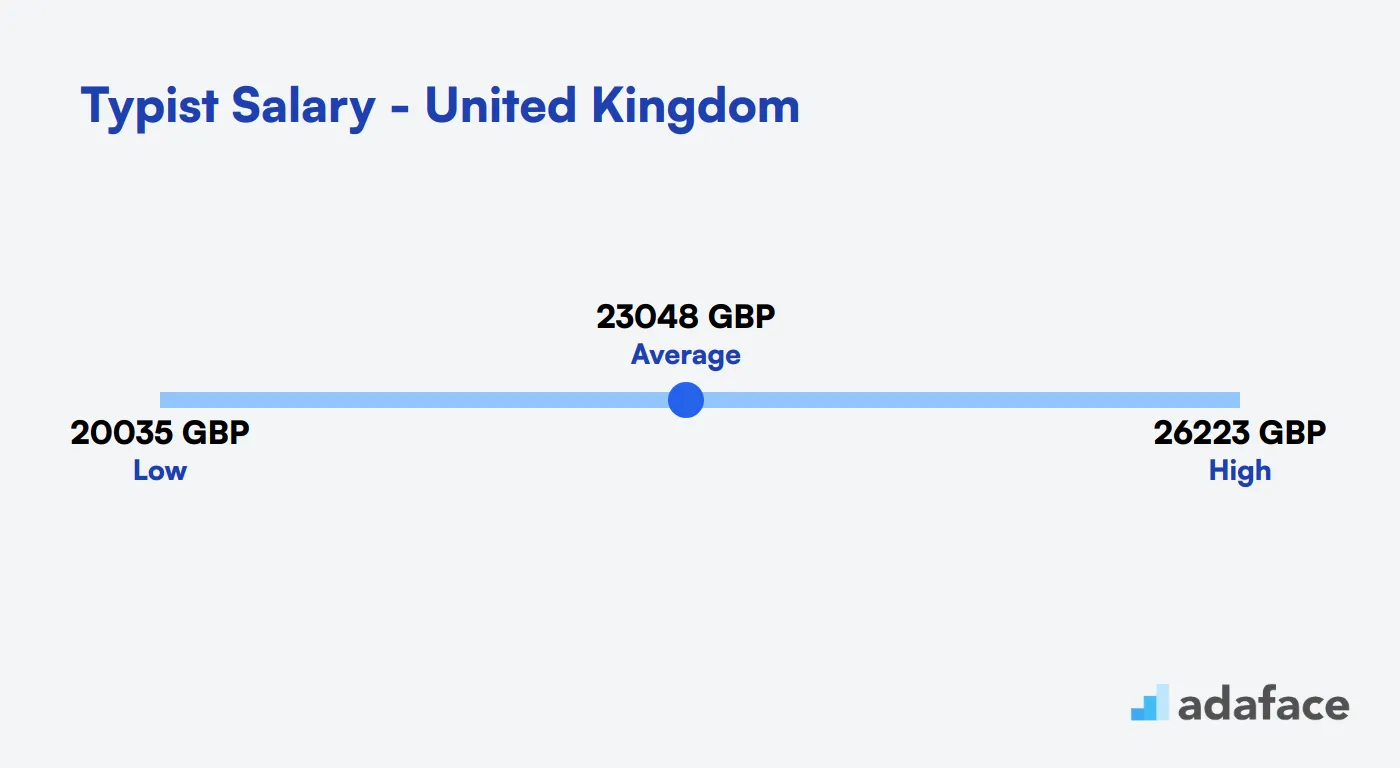
What's the difference between an Entry-Level Typist and a Senior Typist?
Many people struggle to differentiate between entry-level and senior typists, as the core skill of typing is common to both. However, there are significant differences in their capabilities and responsibilities that set them apart in the workplace.
An entry-level typist typically has 0-2 years of experience and types at speeds of 40-60 words per minute (WPM) with 95-98% accuracy. They mainly handle basic data entry and transcription tasks using standard word processing software. Entry-level typists require supervision and follow established procedures for their work.
In contrast, a senior typist boasts 5+ years of experience and can type at speeds of 80+ WPM with over 99% accuracy. They are proficient in advanced document management systems and can handle complex formatting and quality control tasks. Senior typists often specialize in legal, medical, or technical documents and can work independently, sometimes even supervising others.
The difference in skill level also extends to problem-solving abilities. While entry-level typists follow set procedures, senior typists often develop efficient typing processes to improve workflow. This expertise makes senior typists valuable assets in roles that require high-volume data entry or specialized document preparation.
| Entry-Level Typist | Senior Typist | |
|---|---|---|
| Experience Level | 0-2 years | 5+ years |
| Typing Speed | 40-60 WPM | 80+ WPM |
| Accuracy | 95-98% | 99%+ |
| Software Proficiency | Basic word processing | Advanced document management systems |
| Responsibilities | Data entry, basic transcription | Complex formatting, quality control |
| Specialization | General typing tasks | Legal, medical, or technical documents |
| Supervision | Requires oversight | Can work independently, may supervise others |
| Problem-Solving | Follows established procedures | Develops efficient typing processes |
What are the ranks of Typists?
The typist role is often misunderstood or confused with similar positions like data entry or administrative roles. While they share some tasks, typists have distinct ranks based on their skills and responsibilities.
• Junior Typist: This entry-level position typically involves basic typing tasks, such as transcribing documents and data entry. Junior typists often receive supervision and training to improve their speed and accuracy.
• Typist: A standard typist has more experience and is capable of handling a variety of typing tasks with minimal oversight. They may also be responsible for formatting and proofreading documents to ensure they meet quality standards.
• Senior Typist: This rank requires advanced skills and often involves specialized typing tasks, such as legal or medical transcription. Senior typists might also train junior staff and handle more complex projects.
• Lead Typist: A lead typist oversees a team of typists and is responsible for ensuring that all projects are completed efficiently. They often coordinate with other departments and may participate in quality assurance processes to maintain high standards.
Hire the Best Typists for Your Team
Throughout this guide, we've explored the various aspects of hiring a typist, including their roles, the hiring process, necessary skills, and interview structure. We've also provided insights into crafting effective job descriptions and the platforms available for finding the right candidates.
If there's one takeaway from this overview, it's the importance of using accurate job descriptions and tailored skills tests to enhance your hiring accuracy. Consider leveraging tools like the Typing Speed Lowercase Only Test to assess potential hires in a targeted manner. This approach ensures you bring the best typists onboard, aligning their skills with your organizational needs.
Typing Online Test
FAQs
When hiring a typist, look for skills such as fast and accurate typing, attention to detail, proficiency in various document formats, good grammar and spelling, time management, and familiarity with relevant software tools.
You can assess a typist's speed and accuracy using online typing tests. Look for tests that measure words per minute (WPM) and accuracy percentage. Consider using tests that include both basic typing and more complex tasks like formatting or transcription.
A proficient typist should be skilled in word processing software like Microsoft Word, Google Docs, and possibly specialized industry software. Familiarity with Excel and other data entry tools can also be beneficial.
Attention to detail is critical for a typist. You can evaluate this skill using attention to detail tests or by including proofreading tasks in your assessment process.
Both remote and in-office typists can be effective. The choice depends on your company's needs and work culture. If considering remote typists, ensure they have a reliable internet connection and the necessary equipment. Learn more about remote hiring best practices.
During the interview, ask about their typing speed and accuracy, experience with different document types, methods for maintaining focus during repetitive tasks, and how they handle tight deadlines. You can find more typist interview questions in our dedicated guide.
An effective typist job description should clearly outline the required skills, expected typing speed and accuracy, software proficiencies, and any specific industry knowledge needed. It should also describe the typical tasks and responsibilities of the role. Check out our typist job description template for guidance.

40 min skill tests.
No trick questions.
Accurate shortlisting.
We make it easy for you to find the best candidates in your pipeline with a 40 min skills test.
Try for freeRelated posts
Free resources



